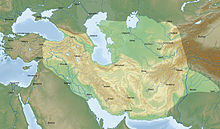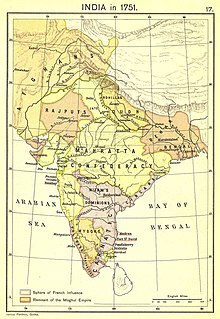| اۉزبېکلر O‘zbeklar | |
|---|---|
| Total population | |
| c. 279,000 | |
| Regions with significant populations | |
| Languages | |
| Religion | |
| Islam | |
| Related ethnic groups | |
The Uzbeks in Pakistan are a small community of ethnic Uzbeks who live in Pakistan. The Uzbeks were one of the first Karluk tribes to arrive in the modern-day region of Pakistan; they ruled the area of Pakhli (modern-day Hazara) for over 200 years from 1472 to 1703. Uzbeks form a significant minority group in the regions of Khyber Pakhtunkhwa and FATA.
There are many Uzbek immigrants in Pakistan from Central Asian countries, mainly Afghanistan and Uzbekistan. Around 2.3% of the Afghans residing in Pakistan are ethnic Uzbeks. The Afghan War drove them to Pakistan. In 1981, many Afghan Uzbek refugees in Pakistan moved to Turkey to join the existing communities based in Kayseri, İzmir, Ankara and Zeytinburnu. The Uzbeks can be found mainly in north-west Pakistan, comprising the areas of Khyber Pakhtunkhwa (in particular Peshawar), Gilgit-Baltistan and Balochistan. Additionally, Uzbek militants allied to al-Qaeda from the Islamic Movement of Uzbekistan and Islamic Jihad Union are believed to reside in the Federally Administered Tribal Areas. Their number at their height was predicted to be anywhere from 500 to 5,000. Now, only a few hundred foreign militants of various nationalities are thought to remain in Pakistan – the majority either having been killed by the Pakistani military's Zarb-e-Azb operation launched in 2014 or shifting to other theaters of jihadist conflicts, such as Syria.
History
Timurid Empire

The empire was founded by Timur (also known as Tamerlane) who was born in modern-day Uzbekistan, a warlord of Turco-Mongol lineage, who established the empire between 1370 and his death in 1405. The Timurid empire included many parts of modern-day Pakistan, such as Punjab, Balochistan, Khyber Pakthunkhwa, Gilgit-Baltistan and Kashmir and left a lasting impact to this region culturally and ethnically. He envisioned himself as the great restorer of the Mongol Empire of Genghis Khan, regarded himself as Genghis's heir, and associated closely with the Borjigin. Timur continued vigorous trade relations with Ming China and the Golden Horde, with Chinese diplomats like Ma Huan and Chen Cheng regularly traveling west to Samarkand to buy and sell goods. The empire led to the Timurid Renaissance, particularly during the reign of astronomer and mathematician Ulugh Begh.
By 1467, the ruling Timurid dynasty, or Timurids, had lost most of Persia to the Aq Qoyunlu confederation. However, members of the Timurid dynasty continued to rule smaller states, sometimes known as Timurid emirates, in Central Asia and parts of India. In the 16th century, Babur, a Timurid prince from Ferghana (modern Uzbekistan), invaded Kabulistan (modern Afghanistan) and established a small kingdom there. Twenty years later, he used this kingdom as a staging ground to invade the Delhi Sultanate in India and establish the Mughal Empire.
Mughal Empire

The Mughal empire is conventionally said to have been founded in 1526 by Babur, a warrior chieftain from what is today Uzbekistan, who employed aid from the neighboring Safavid and Ottoman empires, to defeat the Sultan of Delhi, Ibrahim Lodi, in the First Battle of Panipat, much of what is modern day Pakistan was under the Mughal empire, until its collapse. The Mughal imperial structure, however, is sometimes dated to 1600, to the rule of Babur's grandson, Akbar. This imperial structure lasted until 1720, shortly after the death of the last major emperor, Aurangzeb, during whose reign the empire also achieved its maximum geographical extent. Reduced subsequently to the region in and around Old Delhi by 1760, the empire was formally dissolved by the British Raj after the Indian Rebellion of 1857.

The Mughal designation for their own dynasty was Gurkani (Persian: گورکانیان, romanized: Gūrkāniyān, lit. 'sons-in-law'). The use of "Mughal" and "Moghul" derived from the Arabic and Persian corruption of "Mongol", and it emphasised the Mongol origins of the Timurid dynasty. The term gained currency during the 19th century, but remains disputed by Indologists. Similar transliterations had been used to refer to the empire, including "Mogul" and "Moghul". Nevertheless, Babur's ancestors were sharply distinguished from the classical Mongols insofar as they were oriented towards Persian rather than Turco-Mongol culture. The Mughals themselves claimed ultimate descent from Mongol Empire founder Genghis Khan.
See also
Notes
- Also known as Lashkari (لشکری)
References
- Singh, Shashank, and Shailendra Singh. "Systematic review of spell-checkers for highly inflectional languages." Artificial Intelligence Review 53.6 (2020): 4051-4092.
- "Pakistan's 'fanatical' Uzbek militants". BBC News. 2014-06-11. Retrieved 2022-06-09.
- Afghan Refugees: Current Status and Future Prospects
- Audrey Shalinsky (1994). Long Years of Exile: Central Asian Refugees in Afghanistan and Pakistan. University Press of America. p. 123. ISBN 978-0-8191-9286-8.
- Espace populations sociétés. Université des sciences et techniques de Lille, U.E.R. de géographie. 2006. p. 174.
- "Islamist Uzbeks lead terrorists in Pakistan and Afghanistan – Generational Dynamics". Archived from the original on 2011-07-11. Retrieved 2010-05-16.
- "THE DEATH KNELL FOR FOREIGN FIGHTERS IN PAKISTAN?" by Raza Khan in the November/December 2014 edition of "CTC Sentinel Journal" published by the Combating Terrorism Center at Westpoint University
- Gilbert, Marc Jason (2017), South Asia in World History, Oxford University Press, pp. 75–, ISBN 978-0-19-066137-3 Quote: "Babur then adroitly gave the Ottomans his promise not to attack them in return for their military aid, which he received in the form of the newest of battlefield inventions, the matchlock gun and cast cannons, as well as instructors to train his men to use them."
- Stein, Burton (2010), A History of India, John Wiley & Sons, pp. 159–, ISBN 978-1-4443-2351-1 Quote: "Another possible date for the beginning of the Mughal regime is 1600, when the institutions that defined the regime were set firmly in place and when the heartland of the empire was defined; both of these were the accomplishment of Babur's grandson Akbar."
- Stein, Burton (2010), A History of India, John Wiley & Sons, pp. 159–, ISBN 978-1-4443-2351-1 Quote: "The imperial career of the Mughal house is conventionally reckoned to have ended in 1707 when the emperor Aurangzeb, a fifth-generation descendant of Babur, died. His fifty-year reign began in 1658 with the Mughal state seeming as strong as ever or even stronger. But in Aurangzeb's later years the state was brought to the brink of destruction, over which it toppled within a decade and a half after his death; by 1720 imperial Mughal rule was largely finished and an epoch of two imperial centuries had closed."
- Richards, John F. (1995), The Mughal Empire, Cambridge University Press, p. xv, ISBN 978-0-521-56603-2 Quote: "By the latter date (1720) the essential structure of the centralized state was disintegrated beyond repair."
- Zahir ud-Din Mohammad (2002). Thackston, Wheeler M. (ed.). The Baburnama: Memoirs of Babur, Prince and Emperor. New York: Modern Library. p. xlvi. ISBN 978-0-375-76137-9.
In India the dynasty always called itself Gurkani, after Temür's title Gurkân, the Persianized form of the Mongolian kürägän, 'son-in-law,' a title he assumed after his marriage to a Genghisid princess.
- Dodgson, Marshall G.S. (2009). The Venture of Islam. Vol. 3. University of Chicago Press. p. 62. ISBN 978-0-226-34688-5.
- Huskin, Frans Husken; Dick van der Meij (2004). Reading Asia: New Research in Asian Studies. Routledge. p. 104. ISBN 978-1-136-84377-8.
- John Walbridge. God and Logic in Islam: The Caliphate of Reason. p. 165.
Persianate Mogul Empire.
- Rutherford 2010.
- Canfield, Robert L. (2002). Turko-Persia in Historical Perspective. Cambridge University Press. p. 20. ISBN 978-0-521-52291-5.
Sources
- Rutherford, Alex (2010). Empire of the Moghul: Brothers at War: Brothers at War. Headline. ISBN 978-0-7553-8326-9.
External links
| External videos | |
|---|---|
- "The Islamic Movement of Uzbekistan's Role in Attacks in Pakistan". Anne Stenerson. Combating Terrorism Center, July 2014, Volume 7, Issue 7. Archived from the original on 2022-10-24. Retrieved 2021-08-15.
- "Uzbek militants are becoming very active in Waziristan- Senator Ibrahim Khan (Ferghana)". Kaswar Klasra. Ferghana News. Archived from the original on 2013-04-16. Retrieved 2021-12-01.
{{cite web}}: CS1 maint: bot: original URL status unknown (link) - Who are the Uzbeks launching terror strikes in Pakistan? Archived 2014-08-08 at the Wayback Machine
| Immigration to Pakistan | |||||
|---|---|---|---|---|---|
| Americas | |||||
| Asia |
| ||||
| Europe | |||||
| Africa | |||||
| Oceania | |||||